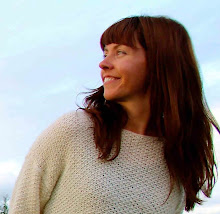Austeng, M. E., et al. (2014). "Obstructive sleep apnea in younger school children with Down syndrome." International Journal of Pediatric Otorhinolaryngology.
Objective - We aimed
to assess the prevalence of obstructive sleep apnea (OSA) in 8 year old school
children with Down syndrome (DS). While the prevalence in otherwise healthy
children is below 5%, the prevalence estimates in children with DS are
uncertain (30–80%). OSA directly affects cognitive development and school
performance. Study designPopulation based cross sectional study in a limited
geographical area. MethodsPolysomnography (PSG) with video and audio recordings
was performed in 8-year-old children with DS in a pediatric sleep unit
according to the guidelines of American Academy of Sleep Medicine. Twenty-nine
of all 32 children with DS within a restricted area comprising >50% of the
Norwegian population and 54% of the children with DS born in Norway in 2002
were enrolled. ResultsThis study reports an apnea hypopnea index AHI>1.5 in
28 of 29 children and an obstructive apnea index (OAI)>1 in 24 of 29
children. 19 children (66%) had an AHI>5 and 17 children (59%) had an OAI>5
which indicated moderate to severe OSA. No correlation was found between OSA
and obesity or gender. ConclusionThe high prevalence of disease found in these
previously undiagnosed 8-year-old children underlines the importance of
performing OSA diagnostics in children with DS throughout childhood. These
findings suggest that the prevalence of OSA remains high up to early school
years. In contrast to earlier publications, this current study has the
advantage of being population based, the study is performed on children of a
narrow age band to estimate prevalence of disease and the diagnostic gold
standard of PSG is applied.
Austeng, M. E., et al. (2013). "Hearing level in children with Down syndrome at the age of eight." Research in developmental disabilities 34(7): 2251.
This study examines
the prevalence of hearing loss in children with Down syndrome at the age of 8.
All children were examined in the ENT-departments of public hospitals in Norway
and the study population consisted of children born in Norway in 2002 with Down
syndrome. Hearing loss was defined as pure-tone air-conduction reduction by on
average more than 25 dB HL in the best hearing ear. A cross sectional clinical
and audiological population based study was chosen as study design. Hearing
loss more than 25 dB HL in the best hearing ear was found in 17/49 children
(35%). Mild hearing loss was found in 13 children (26%), moderate in 3 (6%)
children and severe hearing loss in 1 child (2%). Conductive hearing loss was
found in 8 children (16%), 9 children (18%) had a sensory-neural hearing loss,
and mixed hearing loss was found in 3 children. Mean hearing level among boys
and girls were 30.0 dB HL (SD 15.7) and 25.5 dB HL (SD13.7) respectively, a
non-significant difference (p=0.139). In conclusion this study indicates that
both conductive and sensorineural hearing loss, is still common in children
with Down syndrome children at the age of eight and as much as two thirds of
the children may have a bilateral impairment. The study population was under
diagnosed in terms of hearing loss and thus our findings underline the
importance of continuous audiological follow up of this group of children
throughout childhood.
Austeng, M. E., et al. (2013). "Otitis media with effusion in children with in Down syndrome." International Journal of Pediatric Otorhinolaryngology 77(8): 1329-1332.
ObjectiveTo
determine the prevalence of otitis media with effusion (OME) in children with
Down syndrome (DS), and the associated to hearing loss at the age of 8 years.
Study designA national population based clinical study of all children with DS
born in Norway in 2002. ResultsOME was found in 20 out of 52 (38%) children.
Those with OME had a significant lower hearing level with a mean pure tone
average (PTA) of 33.4dB HL compared to children with no OME whose mean PTA was
21.7dB HL (p<0.0001). Verified hearing loss above 25dB HL in the better
hearing ear was found in 12 out of the 20 with OME, compared to 5 out 31
without OME. ConclusionThe findings of this present study uncover the increased
risk of OME in eight year old children with DS as current otitis media was
found in one of three. This reduced hearing ability in children with DS due to
OME at age of 8 strongly emphasizes the need for optimal treatment and follow
up to optimize hearing rehabilitation. The findings are further supported by
the population based study design, the focus on the narrow age band and the
high response rate.







Thanx for sharing such an informative article, bipap machines can used for the treatment of several disorders like sleep apnea and related issues.
SvarSlettFast cash offer for you today at just 3% interest rate, both long and short term cash of all amounts and currencies, no collateral required. Apply now for your instant approval financialserviceoffer876@gmail.com WhatsApp +918929509036
SvarSlett